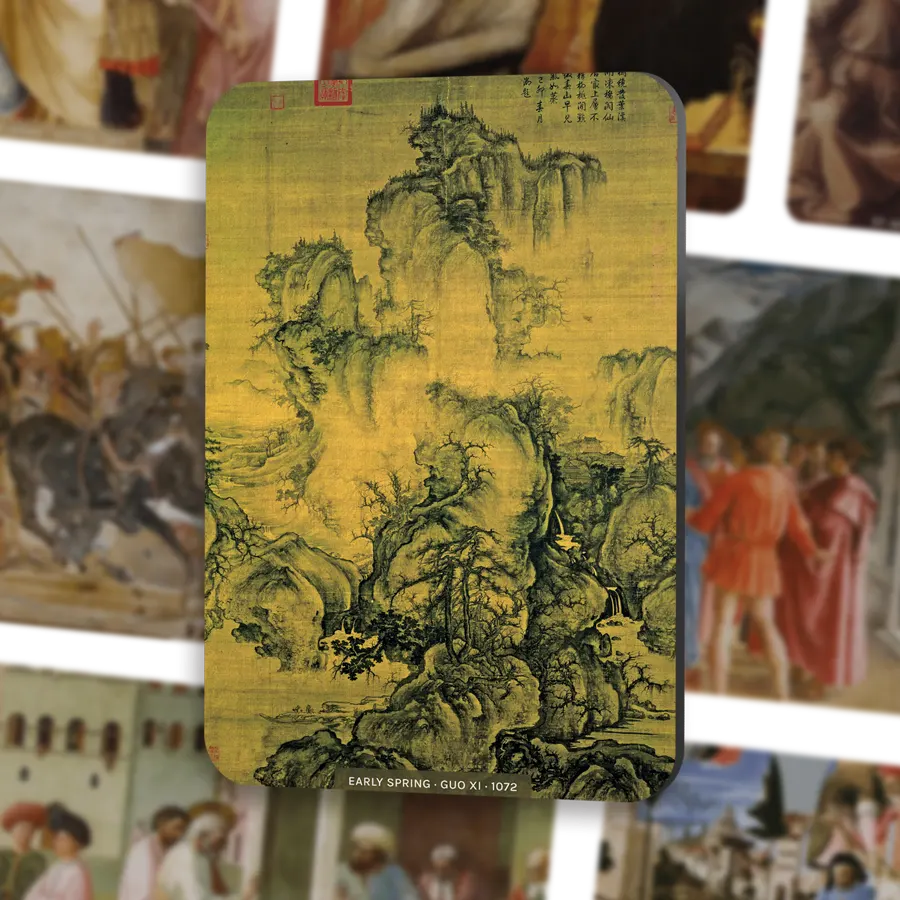The Taj Mahal, an architectural masterpiece, is a world-renowned monument located in Agra, India. Constructed during the Mughal Empire, this stunning mausoleum is considered one of the Seven Wonders of the World. Its white marble structure, intricate design, and historical significance make it a must-visit destination for travelers from around the globe.
What is the Taj Mahal?
The Taj Mahal was built as a mausoleum to house the remains of Mumtaz Mahal, the beloved wife of Mughal Emperor Shah Jahan. Construction of this majestic monument began in 1632 and was completed in 1653. Its design and architecture combine elements of both Islamic and Mughal styles, resulting in a truly unique and breathtaking structure.
Construction of the Taj Mahal
The construction of the Taj Mahal was a labor-intensive process that involved thousands of artisans, craftsmen, and workers. Led by the visionary architect Ustad Ahmad Lahauri, the construction team brought the emperor's grand vision to life. The materials used in building the Taj Mahal were carefully selected, with the main building material being white marble sourced from Makrana, Rajasthan.
Design and Architecture
The Taj Mahal's design is a fusion of Islamic and Mughal architectural styles. The iconic white marble dome is one of its most recognizable features, symbolizing heaven. The four minarets surrounding the main structure add to its grandeur. The intricate carvings, calligraphy, and inlay work created using semi-precious stones such as lapis lazuli further enhance its beauty.
Significance as a World Heritage Site
The Taj Mahal was declared a UNESCO World Heritage Site in 1983 due to its cultural and historical importance. It stands as a testament to the Mughal Empire's architectural prowess and serves as a symbol of eternal love. Its meticulous craftsmanship and artistic beauty continue to captivate visitors, making it one of the most iconic landmarks in the world.
Who was Mumtaz Mahal?
Mumtaz Mahal, whose name means "the chosen one of the palace," was the cherished wife of Emperor Shah Jahan. Their love story is an enchanting tale of love at first sight and devotion. Mumtaz Mahal played a significant role in the construction of the Taj Mahal, as it was built as a tribute to her memory.
The Love Story of Shah Jahan and Mumtaz Mahal
Shah Jahan and Mumtaz Mahal's love story was one for the ages. They shared an unbreakable bond and were inseparable companions. Mumtaz Mahal's unparalleled beauty and grace deeply captivated the emperor's heart. She became his trusted confidante and advisor, always by his side.
Mumtaz Mahal's Death and the Taj Mahal
Tragically, Mumtaz Mahal passed away in 1631 while giving birth to their fourteenth child. Devastated by her demise, Shah Jahan embarked on a mission to build a memorial that would forever commemorate their love. Thus, the idea of the Taj Mahal was born.
Mumtaz Mahal's Role in the Construction
During the construction of the Taj Mahal, Shah Jahan involved himself in every aspect of the project. Mumtaz Mahal's architectural input and aesthetic preferences played a crucial role in shaping the monument's design. Today, the Taj Mahal stands as an eternal symbol of their eternal love and devotion.
How was the Taj Mahal Built?
The construction of the Taj Mahal was a monumental undertaking, spearheaded by Emperor Shah Jahan himself. His vision for the mausoleum demanded the highest level of craftsmanship and attention to detail. The effort and labor put into the construction were immense, with numerous skilled workers dedicated to bringing the emperor's dream to life.
The Role of Shah Jahan
Emperor Shah Jahan played a central role in overseeing the construction of the Taj Mahal. His meticulous supervision and unwavering commitment to perfection ensured that every detail of the monument was meticulously executed. He spared no expense in creating a masterpiece that would stand the test of time.
The Effort and Labor Behind the Construction
Building the Taj Mahal involved extensive labor and craftsmanship. Skilled artisans and craftsmen meticulously carved intricate designs, while masons and laborers worked tirelessly to construct the monument. The construction process was a testament to the skill, dedication, and perseverance of the Taj Mahal's builders.
Materials Used in Building the Taj Mahal
The Taj Mahal's main construction material is white marble, which was sourced from the quarries of Makrana. This high-quality marble was transported over long distances to reach the construction site. The use of marble not only adds to the monument's aesthetic appeal but also ensures its durability and longevity.
What is the Historical Significance of the Taj Mahal?
The Taj Mahal holds immense historical significance, showcasing the influence of Islamic architecture and the grandeur of the Mughal Empire. It stands as a symbol of the love and devotion shared between Shah Jahan and Mumtaz Mahal, representing the epitome of love in Indian history.
The Influence of Islamic Architecture
The Taj Mahal draws heavily from Islamic architecture, blending elements of Persian, Turkish, and Indian styles. Its symmetrical design, intricate geometric patterns, and decorative calligraphy are characteristic of Islamic art and architecture. The Taj Mahal stands as a testament to the creative brilliance of Muslim architects of the time.
The Mughal Empire and its Impact
The Mughal Empire was one of the most powerful and influential dynasties in Indian history. Under the reign of various Mughal emperors, including Shah Jahan, the empire experienced a golden age of art, architecture, and culture. The Taj Mahal stands as a magnificent example of the artistic achievements of the Mughal Empire.
The Taj Mahal and the Mughal Heritage
The Taj Mahal's construction reflects the architectural style and grandeur of the Mughal era. It serves as a reminder of the empire's rich heritage and contributions to the fields of art, literature, and architecture. The monument's historical and cultural significance cannot be overstated, making it an essential part of India's cultural identity.
Visiting the Taj Mahal: A Journey to Remember
A visit to the Taj Mahal is a once-in-a-lifetime experience that leaves a lasting impression on every traveler. Exploring the majestic complex offers a glimpse into the rich history and architectural brilliance that defines this iconic monument.
Exploring the Taj Mahal Complex
The Taj Mahal complex encompasses various structures and gardens that complement the main mausoleum. The meticulously maintained gardens provide a serene atmosphere, and the surrounding structures, such as the red sandstone Agra Fort, add to the overall grandeur of the site. Visitors can also enjoy a serene boat ride on the Yamuna River, offering a unique perspective of the Taj Mahal.
Notable Features and Highlights
The Taj Mahal's imposing dome and minarets stand as its most iconic features. The intricate details of the marble inlay work and the stunning reflections on the water bodies within the complex are sights to behold. Visitors often marvel at the perfect symmetry and attention to detail displayed throughout the monument.
How to Plan Your Visit to the Taj Mahal
When planning a visit to the Taj Mahal, it is advisable to allow ample time to explore the complex fully. The monument is open from sunrise to sunset, except on Fridays. It is recommended to arrive early in the morning to avoid crowds and witness the monument's ethereal beauty during sunrise.
Learn more about history and architecture through Large ARCHITECTUREWALL.
Q: What is the history behind the Taj Mahal?
A: The Taj Mahal is a mausoleum that was built by the Mughal emperor Shah Jahan in memory of his wife Mumtaz Mahal, who passed away in 1631. Construction of the Taj Mahal started in 1631 and was completed in 1643.
Q: What is the significance of Mumtaz Mahal in the construction of the Taj Mahal?
A: Mumtaz Mahal was the beloved wife of Shah Jahan, and her untimely death led to the construction of the Taj Mahal as a symbol of love and devotion from Shah Jahan to Mumtaz Mahal.
Q: Who was responsible for the construction of the Taj Mahal?
A: The construction of the Taj Mahal was commissioned by the Mughal emperor Shah Jahan.
Q: What is the architectural style of the Taj Mahal?
A: The Taj Mahal is a prime example of Mughal architecture, which is a blend of Persian, Islamic, and Indian architectural styles.
Q: Where is the Taj Mahal located?
A: The Taj Mahal is located in the city of Agra in northern India.
Q: Can visitors go inside the Taj Mahal?
A: Yes, visitors are allowed to go inside the Taj Mahal and explore its magnificent interior, including the tombs of Mumtaz Mahal and Shah Jahan.
Q: Who was Aurangzeb and how is he related to the Taj Mahal?
A: Aurangzeb was Shah Jahan's son and the last prominent Mughal emperor. After taking over India, Aurangzeb imprisoned Shah Jahan in the Red Fort and did not allow him to see the Taj Mahal again.
Q: Is the Taj Mahal a UNESCO World Heritage Site?
A: Yes, the Taj Mahal is a UNESCO World Heritage Site and is considered one of the most iconic landmarks in the world.
Q: Why is the Taj Mahal considered one of the Seven Wonders of the World?
A: The Taj Mahal is considered one of the Seven Wonders of the World due to its extraordinary beauty, exquisite craftsmanship, and historical significance as a symbol of love.




